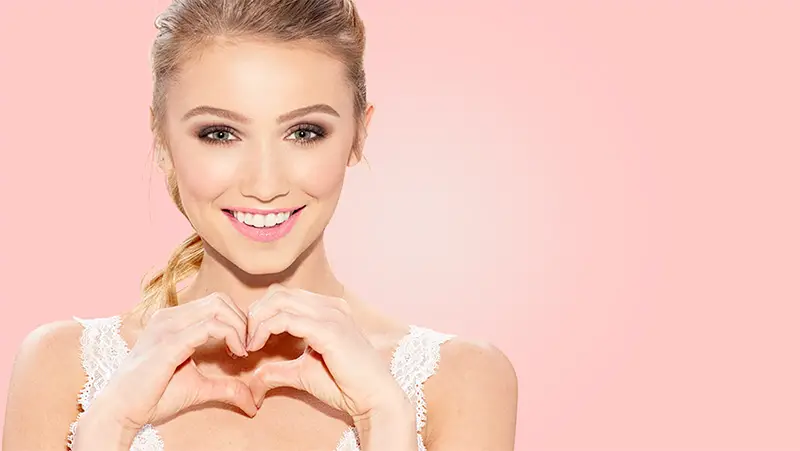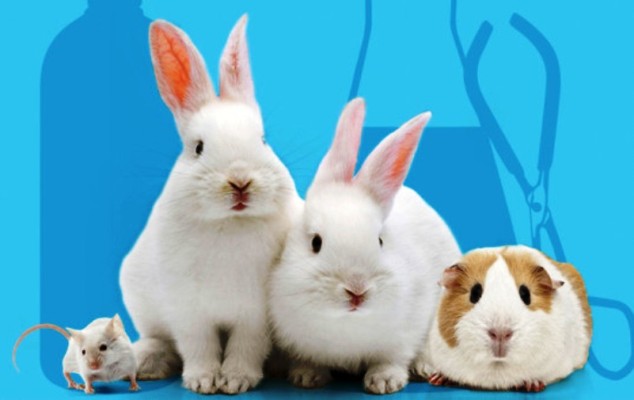Embracing Cruelty Free Beauty
Animal testing for cosmetics is outdated and cruel, and switching has never been easier.
By Josephine Werni, University of Minnesota Twin Cities
If you’re a human who has purchased cosmetics in the last year or two, there’s a swell chance that you’ve seen some evidence of the cruelty free beauty (CFB) movement.
Whether you observed it in the form of blatant, shiny advertising, or a wee bunny sticker on the back of your face lotion, it’s apparent that more and more brands are pledging to abstain from animal experimentation. In an article I wrote several weeks ago, I discussed some of the basics of the CFB movement, including the different databases that you can use to decipher which brands are cruelty free and which aren’t, the dilemma of parent companies and a collection of some prominent humane labels to check out. This time around, I’d like to burrow a bit deeper into the subject and address some topics that previously went untouched.

In the last piece, I failed to describe the difference between cruelty free and vegan. Although they are related and often go hand-in-hand, the two are not interchangeable. A cruelty free product is defined as one that is manufactured or developed by methods that do not involve animal experimentation, whereas the vegan label denotes that a product does not contain anything that came from an animal. Another way to put it is that cruelty free generally refers the lack of animal involvement in the development process, and vegan refers to the absence of animal substances as ingredients in something.
It’s entirely possible for a product to be cruelty free but not vegan. Burt’s Bees is a great example—their brand revolves around the use of bee’s wax, as well as milk and carmine, but there isn’t any critter mistreatment involved. Conversely, a brand may inflict experimentation on animals during development, but not actually include any animal ingredients in their products.
In addition to the digital databases that were linked in the first article, there are a few other ways that someone can figure out whether or not a company has ties to animal testing. As I mentioned earlier, many labels make an effort to include little informational symbols on their products. However, not all brands that operate sans-cruelty advertise it on their stuff, and it’s possible that they might not be on the radar of CFB movement websites.
If you’re curious about the practices of a manufacturer that isn’t appearing in any of these online directories, try figuring out which countries they sell in instead. If a company sells in China, they’re generally disqualified due to the fact that the country has laws that require animal testing on most cosmetics (the United States, in comparison, doesn’t have any laws necessitating animal testing).
While I covered a handful of inexpensive, animal friendly makeup brands in the other piece, I didn’t include any mention of where they could be found. It doesn’t matter if there are plenty of budget friendly, cruelty free companies out there if they’re only carried by two department stores. Accessibility is just as important as affordability. Luckily, you can rest assured that E.L.F, Wet n Wild, Physicians Formula, and EcoTools are all sold at the most common drug stores in the country (Wal-Mart, Walgreens, Target and CVS, to name a few).
Even though cruelty free beauty options are now both abundant and economical, there’s still a little room for hesitation. It’s possible that there are some diehard makeup junkies out there thinking:
I’ve been using the same dope lipstick for eight years, but now I know that it’s tested on hamsters! It’s going to be a pain in the ass to try to find a replacement that truly matches up.
There’s no shame in feeling this way, it can be difficult to give up a product that you’ve trusted for a long time. Fortunately, many other people have found the way around this issue for you. There are myriad videos and lists on the internet dedicated to highlighting cruelty free dupes for the most popular products that don’t pass the ethics test. Many of the websites that contain cruelty free brand databases also have dupe/comparison lists. On YouTube, there are loads of channels that are dedicated solely to this matter.
So, to summarize, it’s been established that adopting an ethical beauty routine is both affordable and as easy as making the decision to skip your 8 AM class for the second time this week.
All of the complicated work has been done for you. Other people have either invented the methods of creating cosmetics without animal testing or taken part in organizing all of the information about it into tidy web content.
Passing on inhumane beauty products isn’t only convenient, it just makes so much more sense—namely because animal testing, at least where cosmetics are concerned, doesn’t make sense in our modern world. A bunch of businesses have proved over and over again that it’s entirely feasible to compassionately manufacture products that are of equal value to those created with the assistance of animal experimentation. Why do so many of the most prominent companies continue to operate under cruel circumstances, despite the increasing pressure to change? Laziness, perhaps? I’m not sure. It’s beyond me.
When it comes to supporting the cruelty free beauty movement, the purest way to do so is to make the choice, the one that you have as a consumer, to spend your money on products that are deliberately humane. It’s important to remember that, in the end, for-profit companies exist and operate for the purpose of making money. They’ll embrace whatever it is that appears to be making them more of it. It might take a little time, as these things often do, but I’m confident that the CFB movement will maintain it’s impressive momentum.









